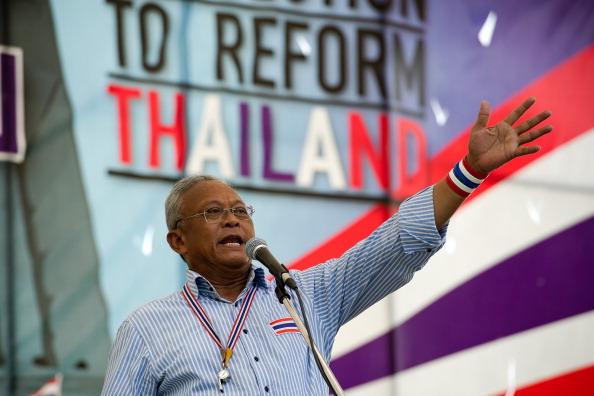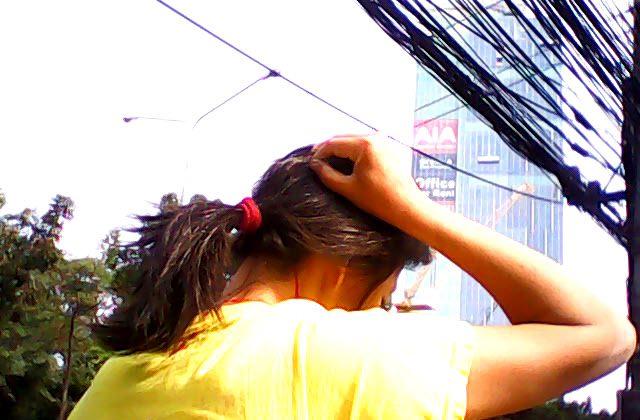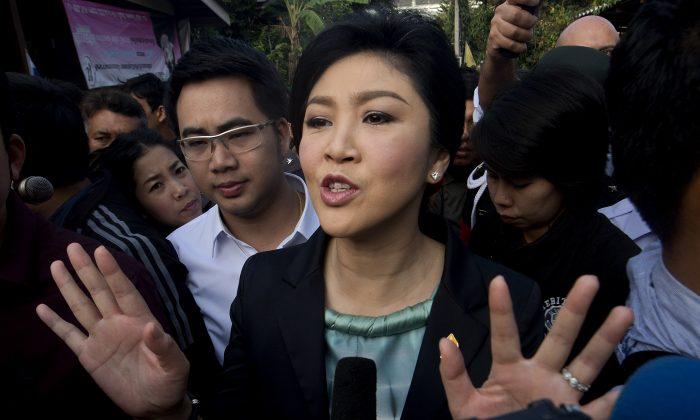BANGKOK— At the western end of the Phra Pinklao Bridge, where bitumen meets fetid floodwater, a collection of flood affected residents and rescue teams face one of Bangkok’s submerged riverside districts.
What are usually roads crammed with traffic in the district of Bangkok Noi are now waterways, where fleeing residents wade through chest- or waist-deep water, paddle around in boats or hitch a lift on crowded trucks towards the bridge that crosses the swollen Chao Phraya River.
Among the vehicles going into the inundated streets on Sunday were two olive green Humvees blazoned with images of Bangkok’s Governor Sukhumbhand Paribatra.
Hitching a lift with the Humvees, it was evident that many of the residents of Bangkok Noi and neighboring Bang Phat had ignored requests to evacuate the flood affected areas and were staying to look after their properties.
Many households and businesses were protected from the foul smelling water by sandbags and concrete barricades, while other buildings were swamped at ground level. Some people with the means to do so were using pumps to push the water back out into the street, where it is expected to remain for a month.
Dozens of semi-submerged vehicles lined the streets, though the majority were driven out of the danger zone earlier, with many parked along the breakdown lanes of the city’s elevated highways.
Governor Sukhumbhand last week advised Bangkok’s ten million residents to get out of the city if they could and take a holiday to miss the expected flooding which in the worst case scenario would affect the entire low lying city. Hundreds of thousands took up his advice and the nearby seaside areas of Hua Hin and Pattaya were packed with fleeing Bangkokians.
While the height of the Chao Phraya River reached record levels, the Thai capital escaped the worst predictions, as the dykes and sandbag defenses held. Serious flooding was limited to seven out of 50 of Bangkok’s districts.
Meanwhile over the weekend Thai language newspapers quoted experts who touted Nov 6 as the date when Bangkok will be out of danger.
The country’s Prime Minister, political novice Yingluck Shinawatra, said the city will be safe as long as the anti-flood measures along the Chao Phraya River continue to hold.
“If things go on like this, we expect floodwater in Bangkok to recede within the first week of November,” she said in a national television address on Sunday night.
But in rural areas north of the city, across a third of the country’s provinces, Thai citizens will continue to live with the flooding and isolation for several weeks to come.
Matthew Cochrane, from the International Red Cross, participated in a Thai Red Cross operation on Sunday to get vital supplies to a community who had been cut off for two weeks in Nonthaburi province, just on the outskirts of the Thai capital.
“It just shows that even within sight of Bangkok the situation for a lot of people is absolutely critical,” said Cochrane.
Further north of Bangkok, neighboring Ayutthaya province has been heavily swamped by floodwater since Oct 10, stranding thousands and forcing the shutdown of five industrial areas, including factories and car plants.
“The water that is here, and now, is going to take a while to clear, it may be five weeks maybe more for this water to fully drain out so there will be communities that will be continue to be affected and once that water clears there are long term issues, there’ll need to be support for people to get back on their feet,” Cochrane said.
Since late July, Thailand has been suffering heavier than usual monsoon rains that have contributed to what has been described as the worst flooding the country has faced in five decades. Over 380 people have been killed.



